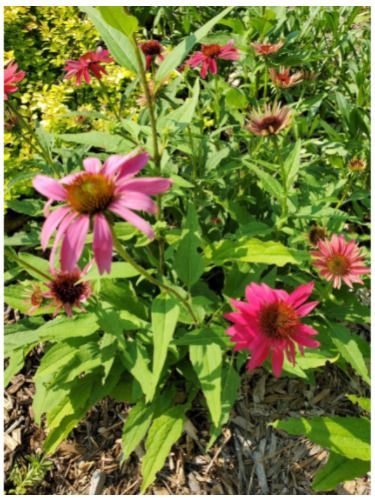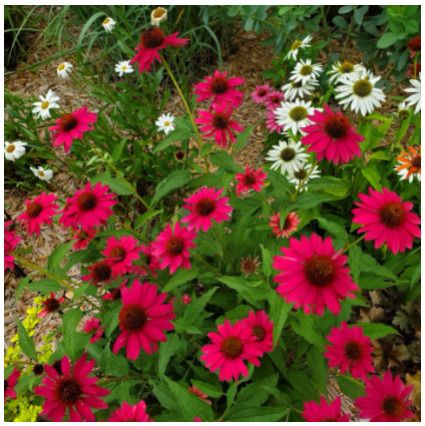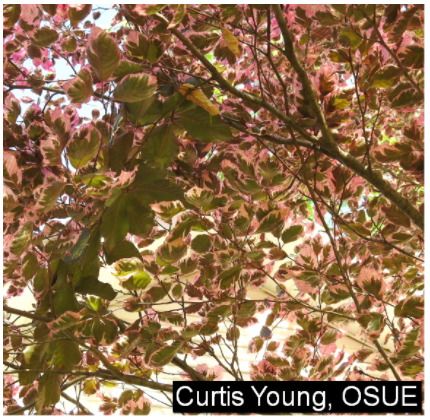Ever wonder if your coneflower wasn’t brighter when you first planted it? Maybe that ‘Pow Wow Berry’ is less “wow”? Maybe that orange one is now a closer shade of peach? There has been a lot of talk about some of the cultivars of popular plants, such as coneflower, reverting to their original (dominant) color. Generally that’s purple or white. And what about those variegated plants losing their variegation.

This is/was a ‘Pow Wow Berry’ – the color seems to be less intense. It was planted 3 years ago. Note: weather can also be a factor.

This is a photo of ‘Pow Wow’ in its first year. A native is sneaking up in behind it by the white coneflower.
Ever see a variegated shrub or tree with one branch/leaf the original green? It’s fascinating that variegated foliage begins as a mutation in nature. Humans then use that mutation to create new cultivars. THEN, sometimes, they revert to their original color. It’s an interesting thing that happens in nature. Of course, most things in nature are pretty interesting, she keeps us on our toes!

This is a variegated Beech tree where one branch has reverted to its more dominant color. Photo from Ohio State University Extension
Whatever the dominant trait is of the plant, it may, at some point, revert to that. When that happens is a big question. There are several theories on whether weather or we have any effect on the process. In the case of Coneflowers, one theory is that the seeds that drop off the plants carry their dominant traits and plant themselves, taking over… hmmm, again, plenty to ponder.
Resources:
While it takes years to create new cultivars of plants and take them through field trials to see how they’ll react to real weather conditions, insects and disease; it also takes years to figure out what’s going on when they change. There can be many factors involved and usually are.
Pondering plants and purchasing those awesome cultivars anyway,


